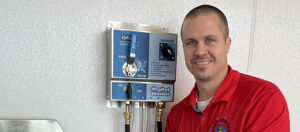By Deborah Jeanne Sergeant
What will job seekers face in Central New York in 2022? For one thing, opportunity.
According to The 2022 Economic Forecast for Central New York, “organizations continue to report difficulty finding key talent or attracting highly skilled labor to the area; retention also remains an issue.”
Released Jan. 26 by CenterState CEO, The 2022 Economic Forecast for Central New York was created from data collected by a CenterState CEO survey and interviews with CenterState CEO members through Research & Marketing Strategies, Inc., a third-party market research company based in Baldwinsville.
Research & Marketing Strategies, Inc. forecasters anticipate a 68% increase in jobs and hiring in 2022 compared with 2021.
Those equipped with the right skills can expect to have plenty of choices, as numerous factors have led to high unemployment levels. The 2022 Economic Forecast listed COVID-19 fueled burnout as one reason among is factors unlikely to change as an impact on the workplace for 2022.
One of the positive environmental factors listed by the 2022 Economic Forecast was the shift to working at home, which is found to have an “impact on the company’s overall productivity from a switch to, or long-term continuation of, remote operations,” the report stated.
“Continued recovery” is the description of the 2022 economy offered by Karen Knapik-Scalzo, associate economist for the New York State Department of Labor Division of Research & Statistics in Syracuse.
“Private-sector jobs continue to grow in the Syracuse Metropolitan Statistical Area (MSA), as the area added 8,200 private-sector jobs between December 2020 and December 2021,” she said. “This represents a 3.4% growth rate.”
The US Census Bureau comprises data from Onondaga, Oswego and Madison counties to form the Syracuse MSA. This area has not returned to pre-pandemic job levels, a trend which Knapik-Scalzo blames on factors including the uptick of retiring baby boomers, company recruitment issues, and a declining labor force.
“For example, the Syracuse metro area is still down by 14,000 private-sector jobs when compared to two years earlier, in December 2019,” she said. “The Syracuse MSA unemployment rate has been trending down and reached 3.8 % in November 2021.”
She does see promise in the growth among most local industries and the good job market for those seeking work, especially in the sectors of hospitality, professional and business services, transportation and warehousing and manufacturing.
“Almost every occupation is in demand right now,” Knapik-Scalzo said. “There is especially acute demand for registered nurses, home health and personal care aides, bus drivers, truck drivers, teachers/substitute teachers, teaching assistants, police officers, cashiers/grocery store workers, cooks, waiters and waitresses, agricultural farm workers and warehouse and distribution workers.”
She wants to see greater focus placed on maintenance for aging infrastructure, which will both help stimulate the economy and help provide employment for those in the construction occupations.
Carol R. Fletcher, president of C.R. Fletcher Associates, Inc. in Liverpool, said that jobs in demand include health care workers, accounting and financial professionals and human resource professionals.
“It is important to applicants that they can work from home, any that they can find a job that pays more than they made pre-COVID,” Fletcher said.
Skilled manufacturing workers and quality control employees are also in high demand.
Medical, lab and healthcare companies all need more staff as the demand for workers has increased because of the pandemic. But Fletcher added that companies are scaling back on receptionists and clerical positions if they are still working remotely and relying on technology to fill their places, such as forwarding phones to remote workers’ cellphones.
It also does not help that many people feel more reluctant to work. Fletcher referenced the American Staffing Association which stated in recent webinar that “people are still spending down their savings from 2021 from stimulus payments and high unemployment wages, thus leading them not to be ready to work yet.”
 Fletcher said that employer challenges for 2022 include enforcing vaccination, employees, employees needing childcare and demanding wages above the market.
Fletcher said that employer challenges for 2022 include enforcing vaccination, employees, employees needing childcare and demanding wages above the market.
As of Jan. 8, 16,971,678 New Yorkers or 87% of the state has received at least one dose and 14,357,890 people or 73% has been fully vaccinated. But forcing employees to become vaccinated can cause resignation among those who resist it.
Childcare issues may arise if schools experience a shutdown or on an individual level if an employee’s child becomes ill with a suspected case of COVID-19.
Employers facing higher costs for inputs struggle to offer the higher wages employees demand. This, in turn, may cause some to try automation or outsourcing tasks to make do with fewer employees.



